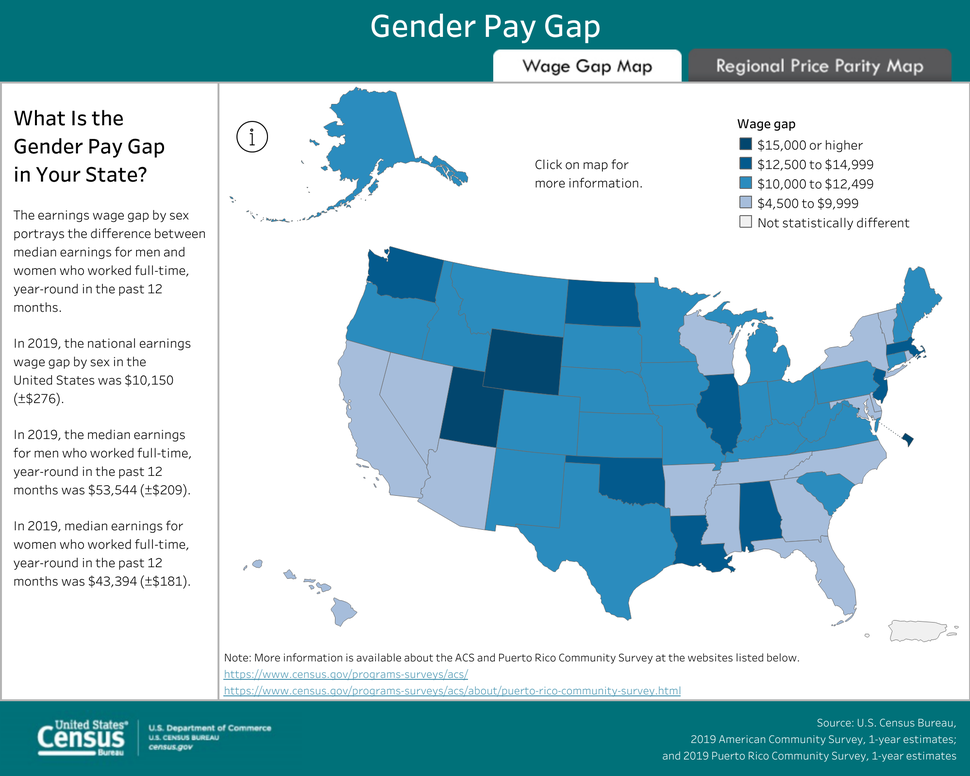
Tuesday marks Equal Pay Day in the United States, a date that honors the ongoing fight to see everyone be paid fairly for their time, energy and labor.
“This date symbolizes how far into the year women must work to earn what men earned in the previous year,” states the website of the National Committee on Pay Equity, which was founded as a coalition of women’s, labor, religious and civil rights groups. The day was first marked in 1996 as a public awareness event.
It’s an effort with no end in sight. In 2022, women in the U.S. earned 82 cents for every dollar earned by men, which is not much improved from the 80 cents to the dollar they earned two decades ago, according to Pew Research Center, which used monthly census data for its calculations.
Women of color experience larger gender wage gaps than white women on average. The National Committee on Pay Equity marks those symbolic “catch-up” Equal Pay Day dates for Black, Latina, Native American and Asian American Pacific Islander women at later points in the year.
Men continue to out-earn women overall and in many of the occupations that boomed during the pandemic, according to a new analysis of Census Bureau data published this week. Management, business, science and arts occupations saw spikes in job gains, but women’s earnings did not keep pace with that growth. For example, women who were business operations specialists had median earnings of $60,982, compared to $80,204 for men in the same job.
“The pay gap hasn’t changed much because, in reality, our attitudes and practices haven’t gone far enough to bring about that change.”
- Glenda Gracia-Rivera, Rutgers Center for Women and Work
Why does the gender wage gap still exist? Ultimately, it’s because there hasn’t been enough change in how we think about women’s place in the workforce.
“There are still widely held gender norms and expectations that contribute to differences in which college majors men and women pursue, which jobs they end up in, and the pay they receive for those jobs,” said Glenda Gracia-Rivera, director of professional development and training at the Rutgers Center for Women and Work.
“As a society, we still expect women to take on a majority of the housework and caretaking responsibilities, and these expectations make their way into the workplace,” she added. “The pay gap hasn’t changed much because, in reality, our attitudes and practices haven’t gone far enough to bring about that change. There has been a whole lot of talk about it, but not a whole lot of action.”
It will take more than short-term solutions, such as teaching women how to negotiate higher salaries, to make a big difference, Gracia-Rivera said. She highlighted the Paycheck Fairness Act as one transformative policy. That bill would let employees talk about their salaries among themselves without facing job retaliation, which could help women uncover and fight against pay discrimination.
“The pay gap is much more rooted in biased and discriminatory practices than any of us can fully grasp,” Gracia-Rivera said.
See How Big The Gender Pay Gap Is In Your State
Using the 2019 American Community Survey and the 2019 Puerto Rico Community Survey data, the Census Bureau created an interactive map to see the gender wage breakdown in each state, along with the top three gendered occupations in each state.
Places with the largest wage gaps included Wyoming ($21,676), Utah ($17,303) and the District of Columbia ($16,032). In addition to seeing a general gap level below, click through to the interactive version of the map to see the exact breakdown of your state.

Nationally, the jobs with the highest count of male workers are sales roles, truck drivers, managers and first-line supervisors of retail sales workers. The jobs with the highest count of women workers are elementary and middle school teachers, registered nurses, secretaries and administrative assistants — except in the medical, legal and executive fields.
When states have an overrepresentation of highly gendered sectors, that can make the data skew one way or the other, Gracia-Rivera noted.
“For example, the top industries in Wyoming are heavily male-dominated, such as oil and drilling, coal mining and petroleum refining. That could mean that there are fewer high-paying opportunities for women, likely relegating them to administrative roles in those sectors,” she said. “Or they might be clustered in traditionally female-dominated positions such as teaching and social work.”